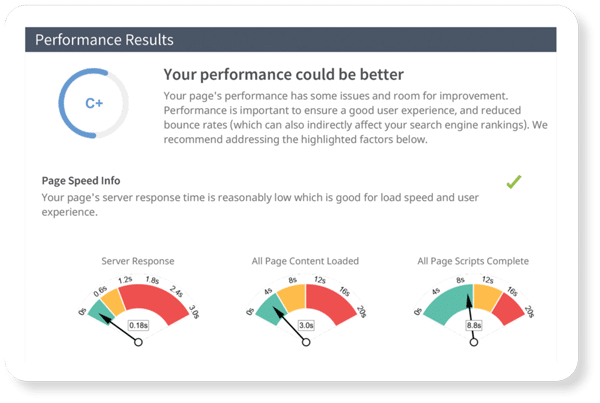
Beyond engaging your visitors, you, of course, want conversions — you want those visitors to book appointments or at least call or chat with questions. Here are some of the factors we weigh when it comes to increasing conversions on your site.
Web Design for Doctors Best Practices
MyAdvice has been designing medical websites for doctors since 1998 so we have seen it all and we wanted to share the latest trends for 2018 in web design for medical practices.
Mobile-friendly design
77% of consumers leave a mobile site if it’s not mobile responsive. –Think with Google, “Consumers in the micro-moment,”
More and more people are searching primarily for their smartphones, and medical practices are not immune to this trend. Google now punishes sites that aren’t mobile-friendly. While your site may look great on a 24-inch home monitor, the question is how does it look on a 5.44-inch iPhone?
Every one of our websites is mobile responsive, meaning it loads quickly and looks great on your phone and desktop. View our unique approach to web design for doctors and medical practices.
Fixed headers
You don’t simply want visitors to your site, you want them to take action, and so your site needs to “funnel” them into actions such as filling out a form. There is a fine line here between user experience and seeking conversions. Toward that end, we’ve perfected a way for the fixed header of call/map/contact buttons to be visible precisely when the user needs it, rather than all the time.
When a user is scrolling down a page, this is a sign he or she is reading content, so we slide the contact header out of the way. However, when a user scrolls back upward, this usually means the person wants to act, such as going back a page, finding a menu, or making contact. Because of this implied behavior, we pull the contact header back in, giving the user easy access to all of the conversion elements. We make reaching out to your practice as frictionless as possible.
Phone number
The main method by which patients and potential patients schedule appointments are by phone. It may seem obvious, but to facilitate the patient being able to easily find your phone number it needs to be prominent and readable. Some designers eschew this and place the number only at the bottom of the page. We place the number in a prominent location atop the page and make the number easily readable and clickable.
You will want to make sure that any time your number is placed on your site from the menu to the footer that a user can click it and call. This functionality has become an expected by online users.
Calls to action
This may also seem obvious, but it never is bad policy to invite your users to call, open a chat, or make an online form fill. We make sure we include calls to action wherever they make sense, without being obnoxious.
Social media
Social media engagement is important for many of your patients. Many of your patients view your social media pages as a way to gain insight into your practice on a more casual level. Google also values these kinds of interactions. Our page designs continually focus on making it easy and seamless for your users to interact with your social media content, and hopefully to share it with others. We do this with “social share” buttons, and links to your various social media profiles, patients can share your specials and blogs easier than ever.
Download a Social Media Content Calendar
Fill out the form below to receive access to a Free Google Sheet to help you manage your social media channels and post consistently!
You can leverage social media messaging on your own site, below you can message our Facebook page directly! Feel free to reach out with any questions.
Contact forms
Many visitors to your website are starting a process of exploring whether or not they want/need to have a procedure. When initially accumulating information, they often are not ready to make a phone call because they assume the practice will want to schedule a visit immediately.
These visitors, however, may be open to filling out a form with a question or two or starting a chat. To accommodate this line of action, we are always mindful of form placement, calls to action, number of fields, and frequency of forms. We want to make sure users can easily find and fill out these forms.
We’re proud of the beautiful website designs we create for our medical practice clients at MyAdvice. But we’re equally proud of how hard those beautiful sites are working to engage and convert visitors, moving them from the category of a visitor to patient.
If your website isn’t addressing all of the above criteria, reach out to MyAdvice or call us at, (435) 575-7470, and let’s talk about how we can change that.



